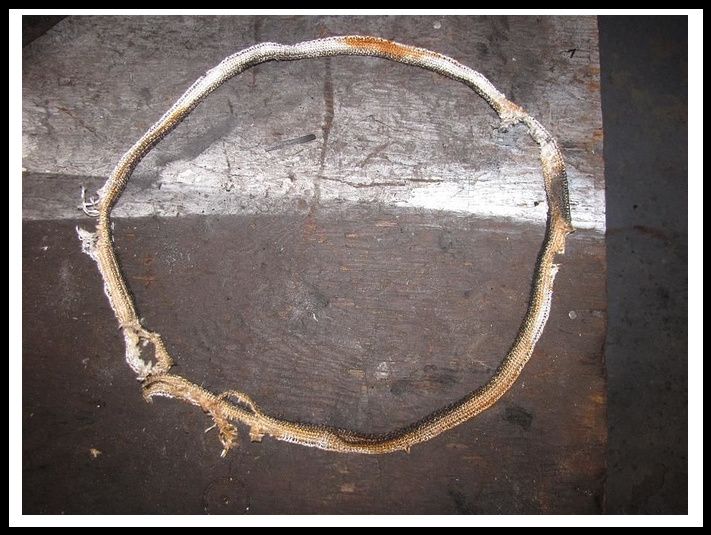I thought I’d make an insulative sleeve for a TLUD I made a while ago. I should have used flour instead of corn starch like I planned originally. My wife wanted me to use it up. The cornstarch and cloth didn’t stay in place. Cornstarch is strange it makes a nonneutonian fluid… But was able to pick up the TLUD without gloves.
So now I have permission to use some flour. Tomorrow.
The suspense is killing us ! ! !

The flower starlite works well, basically. Here applied about 1/16 inch of it. Where it did not crack it did it’s job well. I am going to rewrap with another 1/16 inch thickness. I hope none of the cracks align directly on top of each other. I have thuought that I maybe I should kneed the dough better, as a baker would. Not sure whether this would help prevent cracks. I also found that it is difficult to avoid thin spots. I hope a double wrap will help both cracks and thin spots.
What about adding fiberglass, like they put in cement now days to stop-- make less–cracking?? TomC
How about ceramic insulation.
Bob
What if baking soda and corn starch was mixed then heated until fluffy micro balloon charcoal was made. Then the charcoal powder could be poured into a sealed space (between metal walls) making the insulated sandwich.
That is if the baking soda does make the charcoal fluff up into a micro balloon structure. The baking soda might just keep the charcoal from burning by snuffing it out with CO2.

I did think of adding some sort of fiberous material like fiberglass, or ceramic. Something like that might work inside the firtube. I want to make a foundry transfer ladle out of this and coat it with ladle wash. I think the ladle wash might protect the starlite from oxygen just as it does with metal ladles.
Rindert
This time the dough expanded just as I suppose you would expect it to. It didn’t do that before so I wasn’t expecting it. I kneaded the dough for a few minutes this time. I think for applications where the insulation needs to be handled often I’ll leave the baking soda out. This will keep it thinner harder and more durable.
My wife said I need a noodle making machine. Its an idea.
Flour 100g
Baking Soda 20g
White glue 50g
Water 50g
"It is something you might bake up at home, if you had a laboratory oven filled with argon gas. It is essentially bread that has been cooked until there is nothing left but a carbon foam.
Just follow the recipe:
Mix up flour, yeast and water, hold the salt, knead, let rise.
Bake for 18 hours at 80°C (~175°) until dry.
Do second bake in laboratory tube furnace filled with argon gas until completely carbonized.
Slice and serve as fireproof rigid insulation, electromagnetic shielding.
Tune and adjust recipe “by changing the amounts of yeast and water, which would allow it to be used for a variety of different applications.”"
https://www.treehugger.com/sustainable-product-design/latest-insulation-could-be-toast.html

What were you making, and what recipe did you use?
I listed the ingredients in posting #28 of this thread. All other details of what I did can be seen in my other posts.
Rindert
Thanks. I missed it by just responding to the email notification of your post.
I filled sections of the new machine with Perlite. In the hearth I simply built a chamber to poor the stuff into and then sealed it up with the bottom plate / flange. No sodium silicate used here just sits in there loose.
On the reduction end, this is double walled and this gap I filled with the perlite dry to about 2/3rds of its capacity. Then I did a final fill with the sodium silicate mixed and then used 5/8 rope seal as a seal. So we will see how it works 
Time line for run off on this machine is the second week of March 
Hi Matt, question: do you think your new design in a pellet wood gasifier will be able to make enough wood gas to be used in a vehicle?
Bob
Oops, I put my question on the wrong thread, answer on your thread site.

